
Vegetation Around Las Vegas
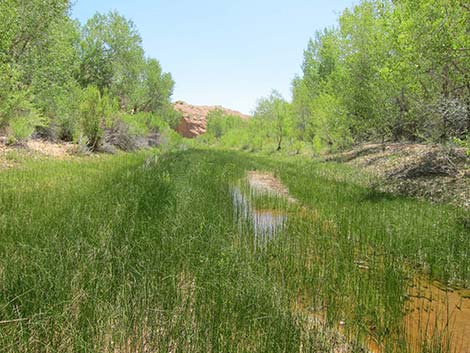 Juncus in the desert |
General: Rushes (Juncus spp.) are grass-like plants that mostly grow in wetlands and usually grow knee-high to waist-high, with leaves that are round in cross-section. Several species of rush occur around Las Vegas, and while some can be recognized, it is sufficient for the casual observer to recognize rushes in contrast to grasses (e.g., Stipa and Poa spp.) and sedges (e.g., Scirpus spp.): Sedge stems have edges, Rushes mostly occur in wetlands, along washes and rivers, and in other wet areas in the Lower Sonoran (Creosote-Bursage Flats), Upper Sonoran (Mojave Desert Scrub and Pinyon-Juniper Woodland), and Transition (Yellow Pine Forest) life zones. However, they also occur at higher elevations, including the Canadian (Pine-Fir Forest), Hudsonian (Bristlecone Forest), and even the Arctic (Alpine Tundra) life zones. |
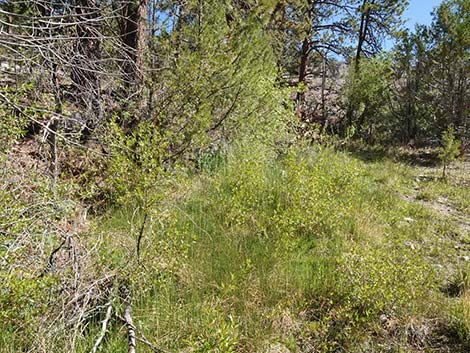 Juncus in high mountains |
Family: Rush (Juncaceae). Other Names: Needlegrass (most species have a common name). Plant Form: Annual and perennial herbs; grass-like. Height: Usually knee- to waist-high. Stems: Usually round (sometimes flat). Leaves: Emerge from the base; blade round and hollow. Flowers: Blooms spring to fall. Inflorescence usually a cluster of flowers emerging from the tip of the leaf or from the side of the leaf near the tip. Individual flowers small and inconspicuous. Seeds: Many in a capsule. |
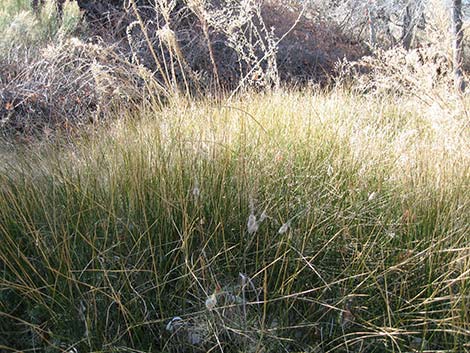 |
Habitat: Usually pond edges, stream edges, riverbanks, and other wet areas. At higher elevations, found in many habitats, including the summits of the highest peaks. Elevation: From springs on the desert floor to the tops of the highest peaks (12,000 feet in southern Nevada). Distribution: Worldwide. Comments: There are 9 genera and 325 species in the Rush family, with some 225 species in genus Juncus alone. They mostly all look alike, although some specialists can tell them apart by details of the inflorescence and seeds. For casual observers, it is sufficient to recognize Rushes in contrast to Grasses and Sedges: Sedges have edges, Rushes are round, and Grasses have leaves all the way to the ground. |
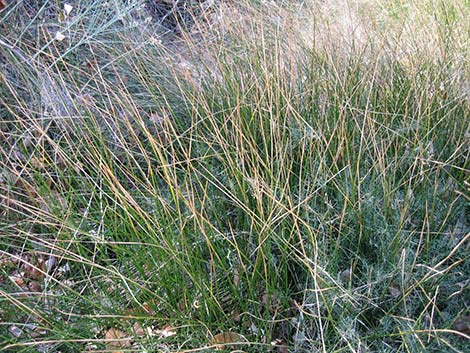 |
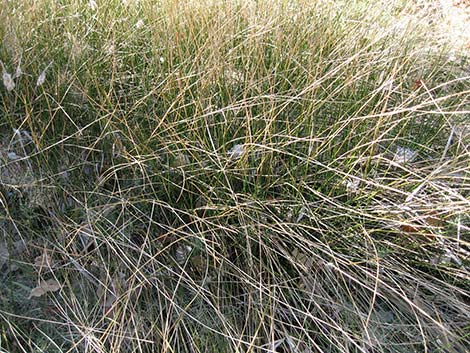 |
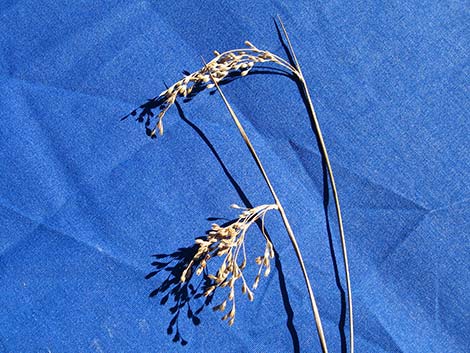 Flowers emerging from the side of the leaf near the tip |
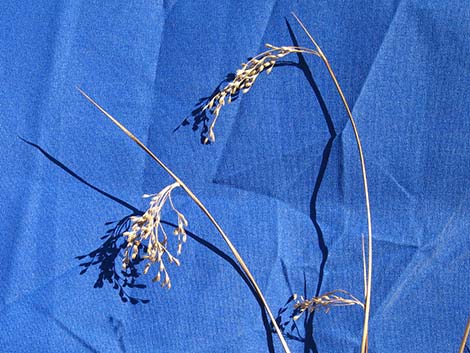 Large seedheads |
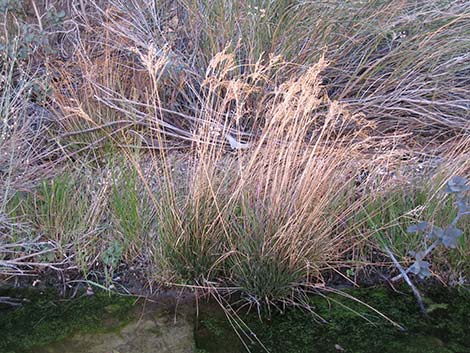 Rushes along a quiet pool of water |
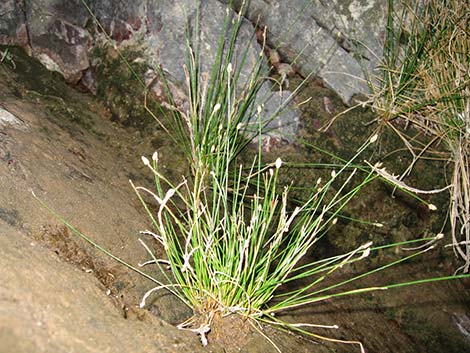 Small rush growing in a damp canyon |
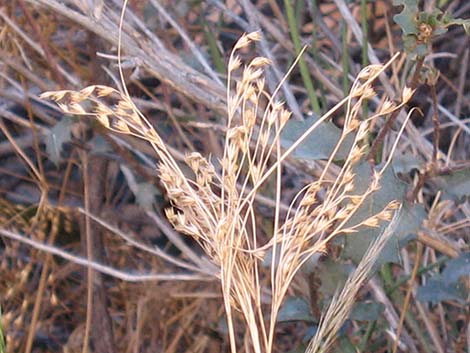 Open seedhead |
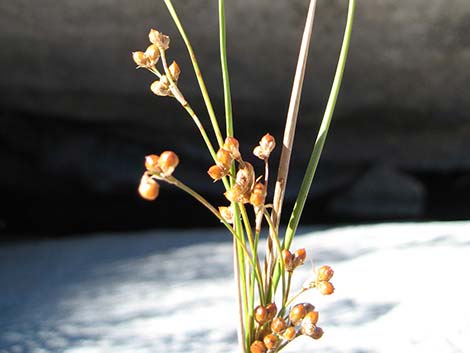 Seedhead of another species |
All distances, elevations, and other facts are approximate.
![]() ; Last updated 220112
; Last updated 220112
| All Aquatics | Plant Species Index | Glossary | Copyright, Conditions, Disclaimer | Home |